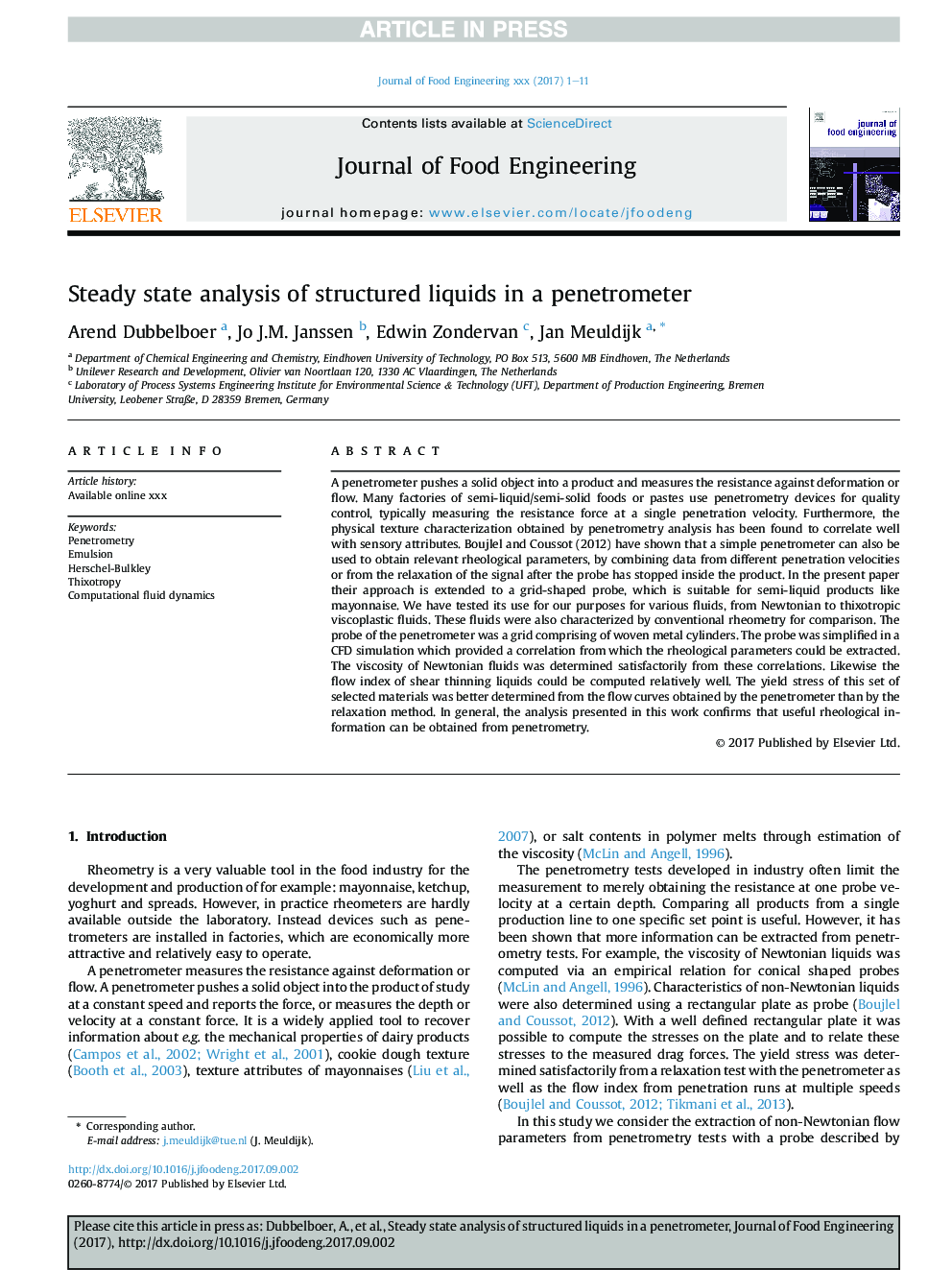| Article ID | Journal | Published Year | Pages | File Type |
|---|---|---|---|---|
| 4908769 | Journal of Food Engineering | 2018 | 11 Pages |
Abstract
A penetrometer pushes a solid object into a product and measures the resistance against deformation or flow. Many factories of semi-liquid/semi-solid foods or pastes use penetrometry devices for quality control, typically measuring the resistance force at a single penetration velocity. Furthermore, the physical texture characterization obtained by penetrometry analysis has been found to correlate well with sensory attributes. Boujlel and Coussot (2012) have shown that a simple penetrometer can also be used to obtain relevant rheological parameters, by combining data from different penetration velocities or from the relaxation of the signal after the probe has stopped inside the product. In the present paper their approach is extended to a grid-shaped probe, which is suitable for semi-liquid products like mayonnaise. We have tested its use for our purposes for various fluids, from Newtonian to thixotropic viscoplastic fluids. These fluids were also characterized by conventional rheometry for comparison. The probe of the penetrometer was a grid comprising of woven metal cylinders. The probe was simplified in a CFD simulation which provided a correlation from which the rheological parameters could be extracted. The viscosity of Newtonian fluids was determined satisfactorily from these correlations. Likewise the flow index of shear thinning liquids could be computed relatively well. The yield stress of this set of selected materials was better determined from the flow curves obtained by the penetrometer than by the relaxation method. In general, the analysis presented in this work confirms that useful rheological information can be obtained from penetrometry.
Related Topics
Physical Sciences and Engineering
Chemical Engineering
Chemical Engineering (General)
Authors
Arend Dubbelboer, Jo J.M. Janssen, Edwin Zondervan, Jan Meuldijk,
